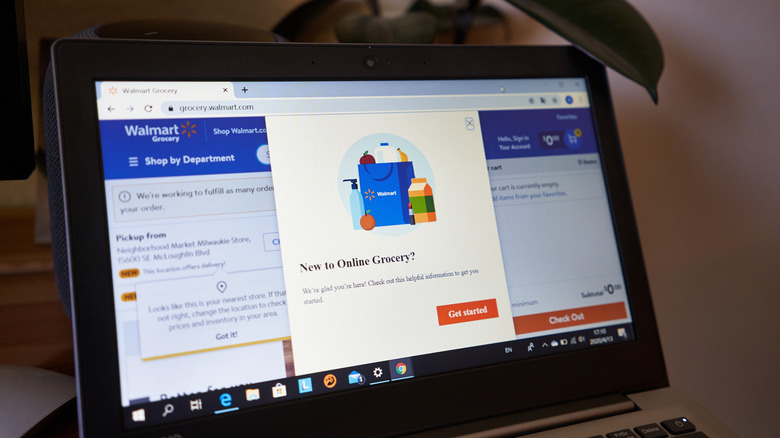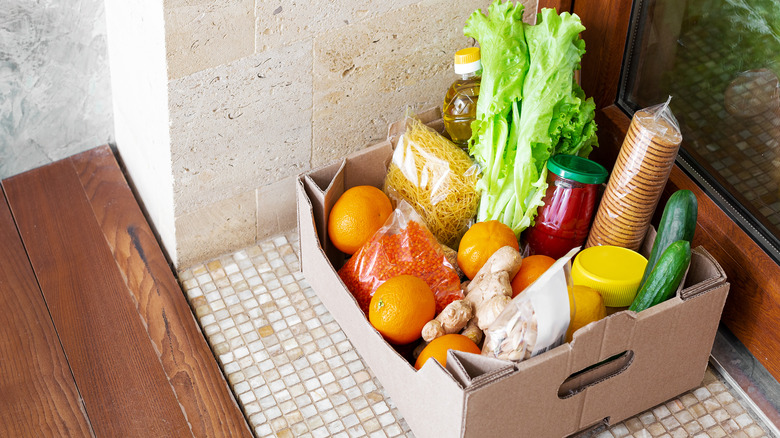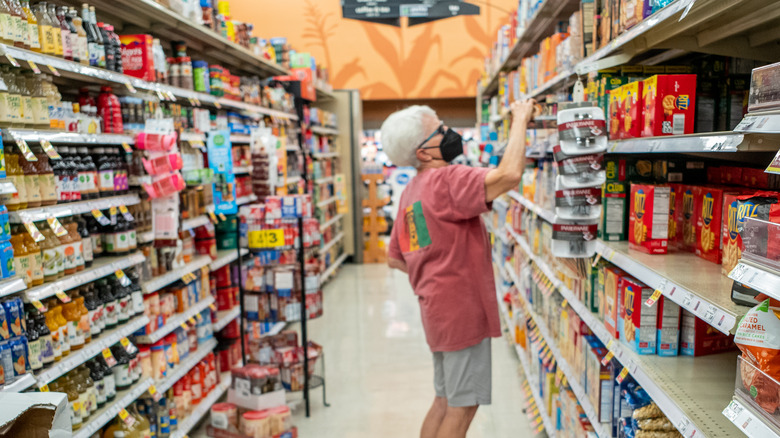How Online Grocery Shopping And Delivery Is Faring Post-COVID
When the COVID-19 pandemic first struck in 2020, market researchers began picking up abrupt changes to the way people were shopping for groceries. Just under three-quarters of those surveyed by C+R Research said they were making fewer trips to the grocery store, nearly half had said they had begun buying in bulk, and 76% said they had stopped looking for their favorite brands. The survey also indicated that grocery deliveries had gone up three and a half times while shopping online had risen 2.5 times, which meant more people were choosing not just to shop from the comfort of their own homes, but getting those items delivered as well.
Data today shows that the early days of the pandemic were a blessing for online grocery shopping and grocery delivery. The Associated Press (AP) quotes market research company Brick Meets Click as saying U.S. shoppers had spent $3.4 billion fulfilling their household needs online in June 2020; that figure was at $500 million in August 2019. In a similar survey reported last May, 54% of consumers also told Coresight Research that they had used an online platform to buy groceries in the past 12 months. However, new trends seem to indicate a change from this boom.
The pandemic pushed the growth of online grocery shopping and delivery
That people were buying groceries online — then getting them delivered – during a potentially deadly pandemic is hardly surprising. But with COVID-19 on the back burner and food inflation running at a 40-year high, the AP says fewer people are now choosing to get their groceries brought to their doorstep.
In June 2022, AP says spending on grocery delivery declined by 26% to $2.5 billion and various surveys have pointed to extra costs as a key reason for the drop. Marketing firm Chase Design's growth and commercial strategy lead Peter Cloutier points to the expense of getting groceries delivered to a shopper's doorstep, saying that it was "difficult to get groceries to a customer's door for less than a $10 premium, which covers labor and transportation." And even though companies like Door Dash and Target do offer free delivery services, customers still have to pay either monthly or annual fees, which can be expensive.
More shoppers prefer to buy groceries in stores
Cost is not the only reason why grocery shoppers are going back to stores to pick up what they need. According to a survey carried out by The Food Industry Association, 43% of shoppers think the quality of items they pick up from the grocery is better when they shop themselves, while just 17% feel that way about online shopping. Peter Cloutier explains this to AP, saying that "There's a trust gap between what the shopper wants to get and what the retailer fulfills."
That's not to say people have abandoned online shopping as a whole and grocery delivery in particular. The Food Industry Association says consumers are aware that there are still benefits to shopping online since digital shoppers can control how much they spend and what they buy before checking out, leaving little for impulse buys. One grocery shopper may have even found the happy medium — she tells AP she uses the grocery store's curbside pickup service instead.
But it's too early to write off grocery deliveries just yet. Brick Meets Click's David Bishop believes that once the dust settles, that part of the industry could see 10% growth per year, per AP.


